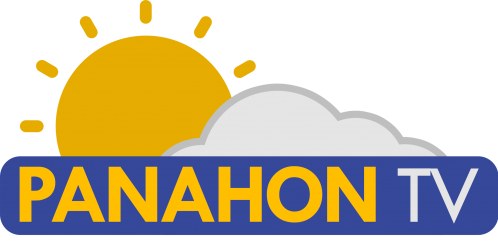We cannot deny that social media plays a huge role in our lives more so during this pandemic. In the absence of face-to-face interaction, Facebook, Instagram, Twitter provide safe and convenient ways for us to connect with family, friends and even work colleagues. Social media updates us on the events in each other’s lives without having to initiate contact and ask “How are you?” Such information is freely shared and available through a mere tap of a finger.
But too much of a good thing may lead to problems. Though virtual interaction may be beneficial to our mental health during the pandemic, mindless scrolling of social media feeds can lead to sadness, loneliness and even exhaustion. Because mobility and activities are currently limited, such emotions may push us to simply pick up the smartphone and indulge in another round of scrolling. To better care for our mental health, we need to break this cycle.
What is social media detoxification?
According to Itin Lachica-Umali, a Psychology professor at the Colegio De San Lorenzo, social media detox is a component of digital media detox. This involves refraining from or minimizing the use of television, and other “technology vices” in favor of face-to-face connection.
Though social media is convenient, the constant distraction it offers may keep us from processing our own experiences. Because the pandemic is unforeseen, Psychologist Roselle Teodosio, owner of IntegraVita Wellness Center, believes that we must be allowed to grieve. “There is an added pressure, most especially from social media, to make the most out of the situation, kind of like making lemonade out of lemons. This can make people more frustrated with themselves, when they can’t seem to find their own “niche.” Also, people are afraid to show their fear, lest they be labeled as negative or a pessimist. But it is actually okay to feel not okay, to admit that one feels fear, that one is afraid, that one cannot function well since there is really an uncertainty during this time. It is also very natural to grieve. Grief would mean an end to something, not just death of a person. It is an end to a friendship, an end to a relationship, an end to a dream and most of all, an end to a lifestyle, a life one had known.”
Umali agrees that social media may push you to compare yourself with others. “This is the root of unhappiness,” she says. “We need to detoxify from social media so we can pause and process things in our own time.”

When do you need a social media detox?
If you experience any of the of the following, you may need to take a break from your computer or phone:
- Spending most of your waking hours on the internet. Experts recommend a maximum of 30 minutes spent on social media daily. According to a 2018 study published in the Journal of Social and Clinical Psychology, this can lead to better health outcomes.
- Not being able to connect face-to-face. The internet should enhance our lives, and not take the place of our reality. If you text or chat in the virtual realm more often than communicating with the family members you live with, then it’s time to disconnect for a while. Real-life interaction boosts your social skills and mental health.
- Not being able to function without social media. Umali shares, “When the person acts as if the phone is an extension of his hands, and he brings it wherever he goes—that is already too much of usage. We are all at risk for social media addiction. Social media should bring out the better versions of ourselves, not our lesser versions.”
Here are some steps for social media detox:
- Have a detox buddy.
- Delete social media apps on your phone.
- Plan new morning and bedtime routines that do not involve your phone.
- Use technology only for reasons other than scrolling through social media.
- Spend more time observing the world around you.
- Converse more with the people in your household.
When you do a social media detox, you may observe these benefits:
- Self-esteem improvement. With more time in your hands, you will be able to process your emotions and experiences more effectively. As a result, you can better gauge the steps you need to take to improve your life. “There’s clarity because you got rid of the stimuli. You are able to think properly, and instead of being just reactionary, you can be proactive,” says Umali.
- Reduced anxiety. “Because of the many things you hear in social media, especially about the pandemic, you tend to get more anxious,” warns Umali. “Should you get vaccinated or not? Even the video of the ladies who took all the eggs from the community pantry became viral, and were bashed. This produced anxiety on their part, so we also need to control our actions so they won’t affect the mental health of others.”
- Increased interaction with the people around you. Though real-life interaction with people outside our household is not recommended during this time, Umali advises to communicate regularly with those around you. “Face-to-face interaction is still better than virtual interaction.”
- Being grateful for what you have. Disconnecting from social media keeps you from comparing yourself with others. It also abates the fear of missing out. Appreciate your blessings and cultivate a positive mindset.
According to Umali, the responsible use of social media begins with thinking before clicking. Carefully think about your comment before posting it. Will it harm other people? What does it say about you as a person? Whatever you put on social media reflects your values and beliefs. Be a responsible user—and this includes limiting your time on social media in order to be healthier.
Donna Lina with Agay Llanera
With the whole world racing to beat the pandemic, COVID-19 vaccinations are at the top of the global news pile. According to Bloomberg, the United States tops the list of having the most vaccinations so far at the rate of over 2 million doses per day.
Since the start of the Philippines’ vaccination drive last March 1, the latest tally of total vaccinations is now over 114,000. Besides the delayed arrival of vaccines, another hurdle the country’s mass vaccination faces is the Filipinos’ reduced confidence in vaccines. According to a recent survey, 46% of Filipinos are unwilling to get inoculated against COVID-19 even if the vaccine was proven safe and effective.
A Brief History of Vaccines
English Physician Edward Jenner is widely recognized to have made the first vaccination in 1796. After inoculating a child with smallpox virus, the vaccinee developed an immunity to the disease. Mass immunization following the development of the smallpox vaccine led to the disease’s global extermination in 1979.
The Centers for Disease Control and Prevention (CDC) acknowledges the crucial role of childhood vaccines in preventing the following diseases:
- polio
- measles
- diphtheria
- pertussis (whooping cough)
- rubella (German measles)
- mumps
- tetanus
- rotavirus
- Haemophilus influenzae type b (Hib)
For communicable diseases, vaccines act as extra protection for the body and the entire community. To get this kind of protection, a community must achieve herd immunity.
What is Herd Immunity?
Herd immunity or population immunity is defined by the World Health Organization (WHO) as the “indirect protection from an infectious disease that happens when a population is immune either through vaccination or immunity developed through previous infection.” WHO makes it clear that it supports herd immunity against COVID-19 through vaccination.
This is achieved through mass vaccination, enabling majority of the population to be immune to the disease. Scientists are still researching how much of the population needs to be inoculated for herd immunity against COVID-19 to take place. In the Philippines, the government announced its plans to vaccinate 100% of its adult population or about 70 million Filipinos.
COVID-19 Vaccination Plan in PH
Last February, the Inter-Agency Task Force for the Management of Emerging Infectious Diseases (IATF-EID) finalized the priority list for the COVID-19 vaccination drive.
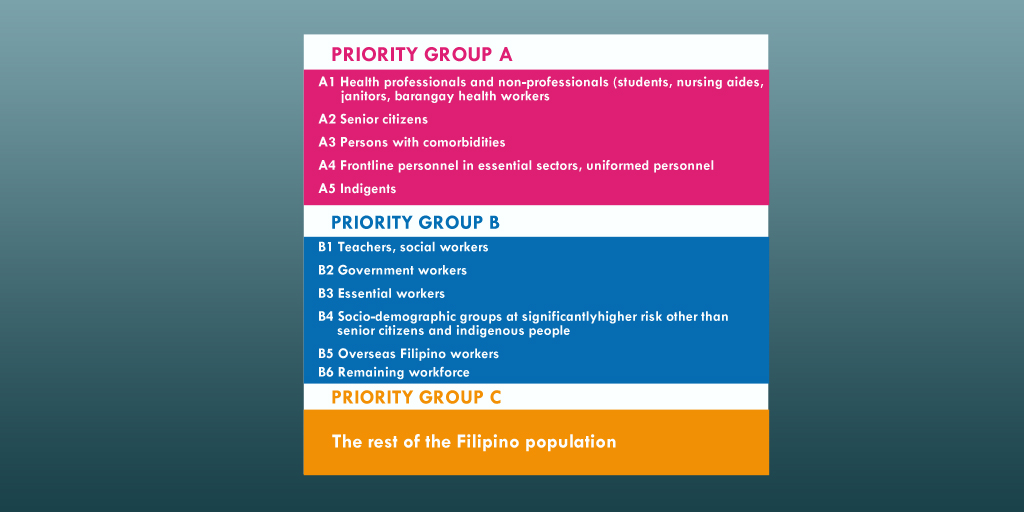 Source: Philippine News Agency (PNA)
Source: Philippine News Agency (PNA)
According to the Philippine National Deployment and Vaccination Plan for COVID-19 Vaccines, the government has accumulated ₱82.5 billion to cover costs of procuring vaccines, logistics, distribution and monitoring.
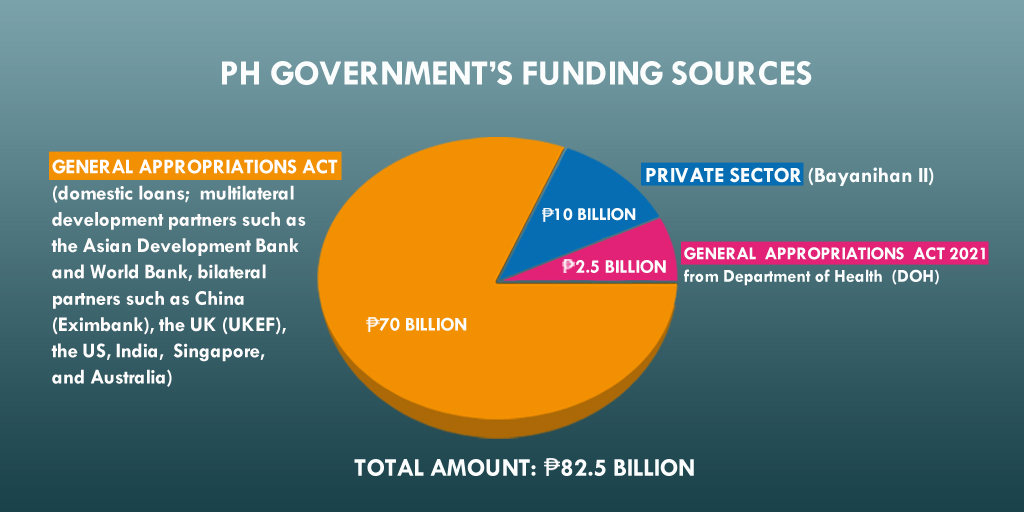 Source: DOH
Source: DOH
With vaccination costs pegged at ₱1,300 per individual according to Department of Finance (DOF) Secretary Carlos Dominguez III, around 57 million Filipinos will benefit from the nearly ₱75-billion funds allocated by the government for vaccine acquisition. The remaining individuals are to be covered by the local government units (LGUs) and the private sector. Under the Bayanihan to Recover as One Act, the national government, local government units (LGUs) and about 300 Philippine companies signed an agreement with British pharmaceutical company AstraZeneca to procure 17 million vaccine doses. In this article, Presidential Adviser for Entrepreneurship Joey Concepcion said that half of the vaccine doses will be given to the national government, while the remaining half are for the companies’ workforce.
Nationwide Vaccination Drive
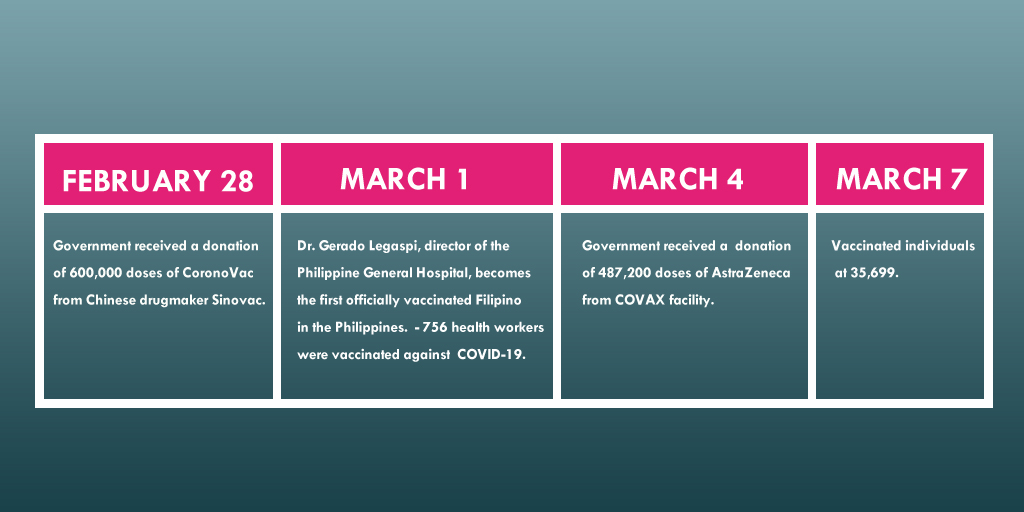 Sources: DOH, WHO, PNA
Sources: DOH, WHO, PNA
 Over 480,000 doses of AstraZeneca vaccine arrive in the Philippines from the COVAX facility. (Photo from National Task Force Against COVID-19)
Over 480,000 doses of AstraZeneca vaccine arrive in the Philippines from the COVAX facility. (Photo from National Task Force Against COVID-19)
With population projections from the Philippine Statistics Authority, the government developed a three-year vaccination plan from 2021 to 2023. The roadmap assumes that by 2022, those 16 years old and below may be allowed to take the vaccine, and that by 2023, newborns can be inoculated against COVID-19. Those who’d taken the shots in 2021 will be given booster shots in the succeeding years.
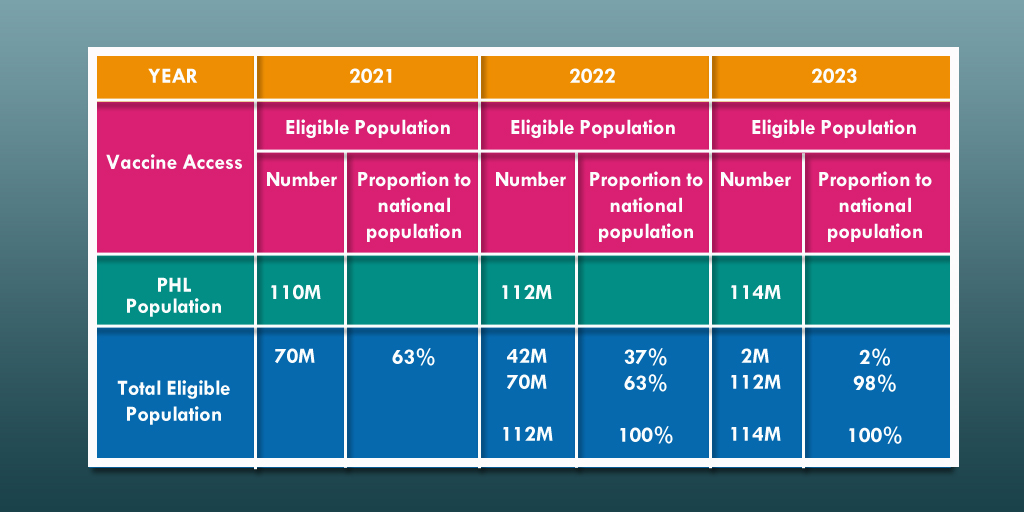 Source: DOH
Source: DOH
Achieving Herd Immunity
Though WHO emphasizes that “the proportion of the population that must be vaccinated against COVID-19 to begin inducing herd immunity is not known,” the Philippine government’s goal of vaccinating 70 million Filipinos this 2021 aims to achieve herd immunity. Because each vaccination requires two doses, 140 million vaccine doses need to be rolled out in a year.
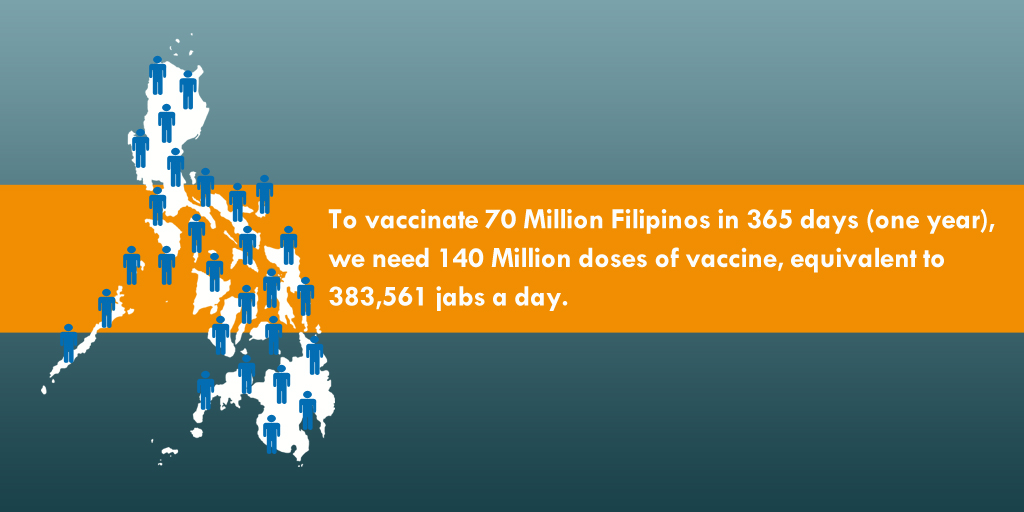
Based on such figures, the government needs to ramp up its vaccination drive to achieve herd immunity, and enable the country to recover both from the health and economic crises.
The country’s battle against the pandemic is still unfolding but one thing remains clear: until the crucial number of 70 million have not been vaccinated, Filipinos need to be on their toes as cases continue to surge.
Time is of the essence, but with majority having no means for vaccination yet, basic health and safety measures are still the strongest defense against this disease which continues to add to the global death toll of over 2 million.
